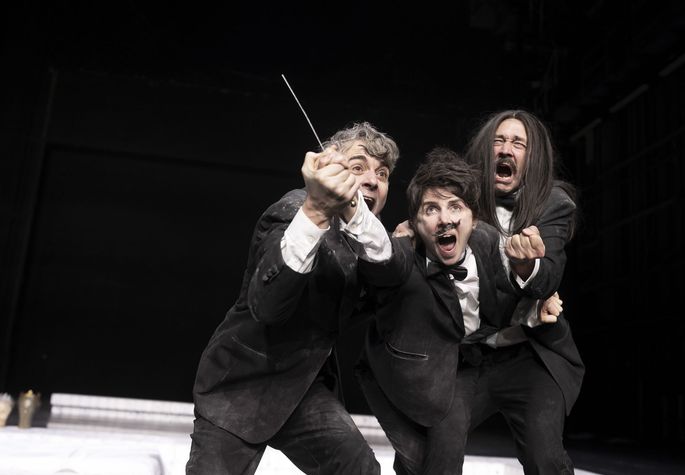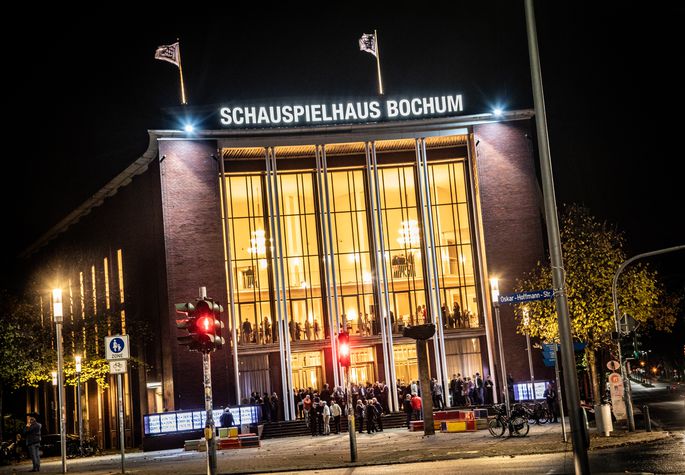Quick Info
Warning: DOMDocument::loadHTML(): htmlParseEntityRef: no name in Entity, line: 5 in /var/www/vhosts/schauspielhausbochum.de/httpdocs/libs/html2text/src/Html2Text.php on line 151
SENSEFACTORY ist eine Produktion des Muffatwerks München in enger Abstimmung mit den beteiligten Künstlern. SENSEFACTORY wird gefördert und ermöglicht durch die Kulturstiftung des Bundes im Rahmen des „Fonds Bauhaus heute“. Weitere Unterstützung gibt das Goethe-Institut Montreal. Kooperations- und Entwicklungspartner sind die Moholy-Nagy-Hochschule für Angewandte Kunst in Budapest und die Concordia University-Milieux/Hexagram Institute for the Art & Technology. Diese Lehreinrichtungen miteinzubeziehen ist wichtig, da ein zentrales Element des Bauhauses die Integration von Kunst und Design in die Lehre war. Workshops mit Künstlern und Studierenden sind fester Bestandteil des Projekts.
SENSEFACTORY is a spectacular large scale performative installation combining architecture, sound, smell, light and AI technology into a immersive multi-sensorial experience. In the 1920s, László Moholy-Nagy with the Bauhaus imagined a new kind of a theater for the senses. In a “Mechanized Eccentric” as he called it machine and organism should be merged. 100 years later this utopian vision now can be experienced – in an up-to-date version that uses latest technological developments. Created by an international team of artists, architects, designers and technologists, SENSEFACTORY sends visitors on an exhilarating sensory journey through a colossal, ever transforming pneumatic architectural environment that changes form and shape before your very eyes. The Bauhaus sought a new relationship between humans and machines – a theater that would integrate the human spectator and actor into a new kind of rhythmic and dynamic media process. 100 years later, we are enveloped in these total environments of media that continually scan, surveil, record, monitor and transform us. SENSEFACTORY reflects on our radical times – creating a compelling event that oscillates between intensive sensual experience and meditative reflection; physical euphoria and nervous unease. THE EXPERIENCE SENSEFACTORY creates an intense and immersive sensory experience for the audience. It consists of a journey through an almost hallucinogenic, ever transforming environment of light, vibration, sound, smell, color and physically shifting architecture whose actions, patterns and rhythms are steered/controlled by artificial intelligence algorithms – what is called “machine learning”. The audience first arrives at the site of the performance. As the visitors wait to enter the performance, they hear in the distance a shifting sonic landscape. Their anticipation builds of what will come next. They step into an environment that seems otherworldly, alien. Bathed in the vibration, sounds and light, the visitors enter an area occupied with several large pneumatic forms. They seem to beckon the audience to interact with them. Structures that do not remain static but begin to move. Immersion and transformation mark the overall experience for the visitors. In this ever-transforming environment, there is nothing to hang onto except one’s own perception and experience. Like Moholy-Nagy’s argument that “In today' s theater, STAGE AND SPECTATOR are too much separated, too obviously divided into active and passive, to be able to produce creative relationships and reciprocal tensions” (Bauhausbücher 4). This separation no longer exists in this performative installation - viewing the experience from outside becomes impossible Moholy-Nagy’s “thousand-eyed NEW DIRECTOR, equipped with all the modern means of understanding and communication” orchestrates this sensorial spectacle. The actions of light, sound, image and other media are controlled by invisible forces - what in artificial intelligence research is called “machine learning.” Machine learning is what drives our contemporary world – from Google searches to Facebook profiling and Netflix preference algorithms. In SENSEFACTORY, however, we use the machine learning to not simply recognize existing patterns but to generate new ones creating compelling new theater that as Moholy-Nagy imagined will “produce a kind of stage activity which will no longer permit the masses to be silent spectators, which will not only excite them inwardly but will let them take hold and participate”. THE CONTEXT We take Moholy-Nagy’s vision of the “Theater of Totality” as expressed in his pioneering graphically depicted “Sketch for a Score for a Mechanized Eccentric – Synthesis of Form, Movement, Sound, Light (Color) and Smell” and “Theater, Circus, Variety” in Bauhausbücher 4, published 1925, as the basis for rethinking what such a performative action, an overwhelming sensory stage environment where the human actor/spectator is dissolved in a flurry of media, means today. With SENSEFACTORY, the physical and sensorial experience of space, vibration, smell, sound comes face to face with the digital apparatuses of our contemporary world: sensors, data streams and algorithms that increasingly shape our social and cultural experience. The autonomy that Moholy-Nagy sought in his visible machines, however, has now been carried over into the “smart” environments we inhabit and his vision of the theater as an organism has been transformed in the computationally-driven, invisible machineries of our time: pattern recognition, self-driving cars, drones, machine learning systems. Moholy-Nagy’s vision is not only virtual but also deeply physical and material. It talks about vibrations, the actions of light and sound, the movement of mechanical and electrical “bodies” in space and the production of new senses. Thus, we update the “Theater of Totality” into what is called “mixed reality” – the merging of real and virtual worlds to produce new environments and visualizations where physical and digital objects co-exist and interact in real time. Moreover, by embodying the speed and dynamism of the time into new technologies, Moholy-Nagy radically sought to reimagine the human – to merge the spectator and the stage – a vision that was carried not only by the Bauhaus but by the avantgarde theater and performance pioneers of the time: Kiesler, El Lissitzky, Schwitters, Meyerhold, Piscator. The human sensorium is thus reconfigured by a stage environment that allows the audience to “fuse with the action of the stage at the peak of cathartic ecstasy” (Bauhausbücher 4).
Staff
- Erik Adigard
- Sofian Audry
- FM Einheit
- Dietmar Lupfer
- Chris Salter
- Alex Schweder
- Sissel Tolaas
















